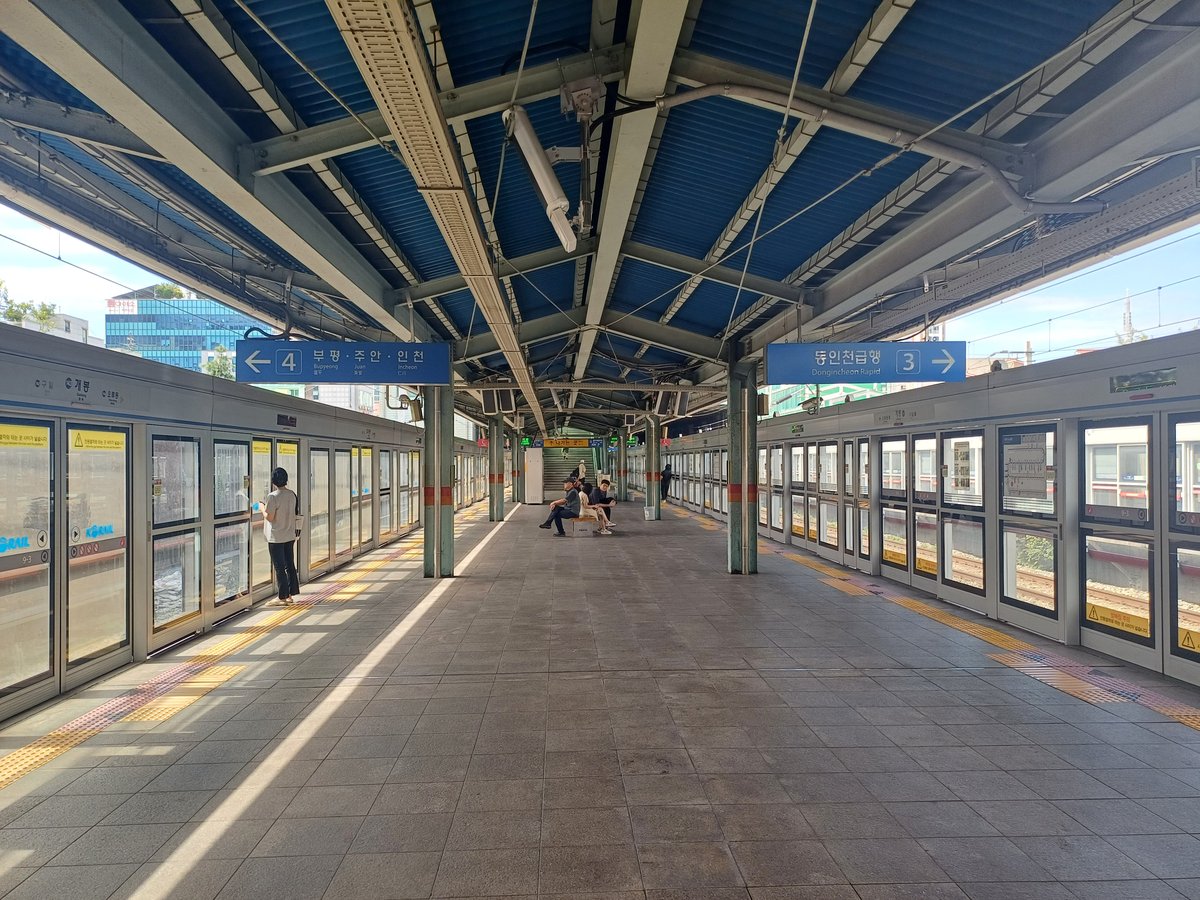
Gaebong Station Visiting Guide: Seoul, South Korea – Tickets, Hours, and Tips
Date: 14/06/2025
Introduction
Gaebong Station, located in Seoul’s southwestern Guro District, is a vital hub on Seoul Subway Line 1. More than just a transit point, Gaebong Station connects travelers and locals to the area’s rich history, authentic neighborhoods, and diverse cultural attractions. Since its opening in 1996—amidst Seoul’s rapid modernization—the station has played a pivotal role in transforming Guro from an industrial zone into a dynamic urban center, reflecting both the city’s growth and its commitment to accessible, efficient public transport (Namu Wiki: Gaebong Station; Metro Line Map: Gaebong).
With modern amenities such as platform screen doors, real-time train information, and multilingual signage, Gaebong Station is both safe and user-friendly. Its surroundings offer an authentic glimpse into everyday Seoul, boasting lively markets, local eateries, and easy access to major venues like the Gocheok Sky Dome. Whether you’re a commuter, a culture enthusiast, or a first-time visitor, this guide provides all the essential information on operating hours, ticketing, nearby attractions, accessibility, and tips for making the most of your time in this vibrant district.
Table of Contents
- Introduction
- Historical Context and Significance
- Visitor Information (Hours, Tickets, Accessibility)
- Nearby Attractions and Experiences
- Tips for Visitors
- Frequently Asked Questions (FAQ)
- Conclusion & Final Recommendations
- Sources and Further Reading
Historical Context and Significance
Development and Urban Transformation
Gaebong Station was inaugurated in 1996 as part of Seoul’s broader push to expand public transit to newly integrated districts. Its location in Guro District—a region that rapidly urbanized following Seoul’s annexation expansion in 1962—helped catalyze the local shift from heavy industry to mixed commercial and residential use (Namu Wiki: Gaebong Station).
Role in the Transportation Network
Situated on the historic Gyeongin Line, Korea’s oldest railway corridor (established in 1899), Gaebong Station provides seamless connectivity to central Seoul and key districts, making it a practical gateway for both travelers and residents (Metro Line Map: Gaebong).
Socioeconomic Impact
The station’s opening spurred local development, attracting new businesses, residential complexes, and amenities that revitalized the area. Its presence continues to support Guro’s evolution into a vibrant, mixed-use district.
Architectural and Operational Features
- Aboveground Station: Two platforms, four tracks for local and express services
- Multiple Exits: Direct connections to bus lines, neighborhoods, and amenities
- Modernization: Platform screen doors, real-time train info, multilingual signage (Visit Seoul: Transportation)
Visitor Information
Operating Hours
- Daily: Approx. 5:30 AM – Midnight
- Note: First and last train times may vary slightly; check schedules for details.
Ticketing and Fares
- Ticket Purchase: Automated vending machines and ticket counters are available.
- T-money Card: Recommended for convenience—usable on all Seoul subways, buses, and some taxis.
- Fare System: Distance-based; discounts for children, seniors, and travelers with disabilities.
Accessibility
- Elevators, Ramps, and Tactile Paving: The station is fully accessible to wheelchair users and the visually impaired.
- Accessible Restrooms and Service Counters: Facilities for travelers with special needs are available.
Nearby Attractions and Experiences
Local Life & Markets
- Traditional Markets: Explore fresh produce, Korean street food, and everyday wares at vibrant local markets near the station.
- Local Eateries: Sample authentic Korean dishes in nearby restaurants and food stalls.
Major Venues
- Gocheok Sky Dome: A premier venue for sports and concerts, just a short walk or subway ride away (Mapcarta: Gaebong Station).
Cultural and Historical Sites
- Abraham Park Kenneth Vine Collection: Museum with biblical and archaeological artifacts, located nearby (Traveloka Gaebong Station page).
- Gwangmyeong Cave: A unique attraction combining mining history with modern art installations, accessible by a short bus or taxi ride.
- Anyangcheon Stream Park: Nearby green space ideal for walking, cycling, and seasonal cherry blossom viewing.
Photogenic Spots
- Station Platforms: Capture the energy of Seoul’s daily commuters.
- Markets and Streets: Colorful, dynamic scenes perfect for street photography.
- Sky Dome and Parks: Iconic architecture and natural beauty.
Tips for Visitors
- Travel Smart: Use a T-money card for seamless, cashless transit.
- Avoid the Rush: Travel during off-peak hours (outside 7–9 AM and 6–8 PM) for a more comfortable experience.
- Navigation: Download Kakao Map or Naver Map for accurate directions—Google Maps is less reliable in Korea.
- Language: Most station signage is bilingual, but translation apps (like Papago) can help in markets or eateries.
- Local Etiquette: Greet vendors, keep noise levels down, and ask permission before taking photos.
Frequently Asked Questions (FAQ)
Q1: What are Gaebong Station’s operating hours?
A1: Approximately 5:30 AM to midnight daily. Train schedules may vary slightly by line and direction.
Q2: How do I buy tickets?
A2: Purchase single-journey tickets at vending machines or use a rechargeable T-money card.
Q3: Is Gaebong Station accessible for travelers with disabilities?
A3: Yes—elevators, ramps, tactile paving, and accessible restrooms are provided.
Q4: What attractions are near Gaebong Station?
A4: Nearby highlights include traditional markets, Gocheok Sky Dome, Abraham Park Kenneth Vine Collection, and Gwangmyeong Cave.
Q5: Are there guided tours available?
A5: While not offered at the station itself, local tourism offices and private operators provide tours to nearby cultural and historical sites.
Conclusion & Final Recommendations
Gaebong Station exemplifies Seoul’s successful balance between rapid modernization and the preservation of vibrant community life. It offers not only efficient connectivity but also opportunities to experience local culture, authentic food, and unique attractions. Whether you’re a commuter, a history buff, or simply curious about Seoul’s less-explored neighborhoods, Gaebong Station is an excellent starting point.
Plan ahead by checking train schedules, using a T-money card, and exploring the neighborhood’s markets and parks. For real-time updates and insider tips, download the Audiala app and follow official Seoul tourism channels.












































































































































































































